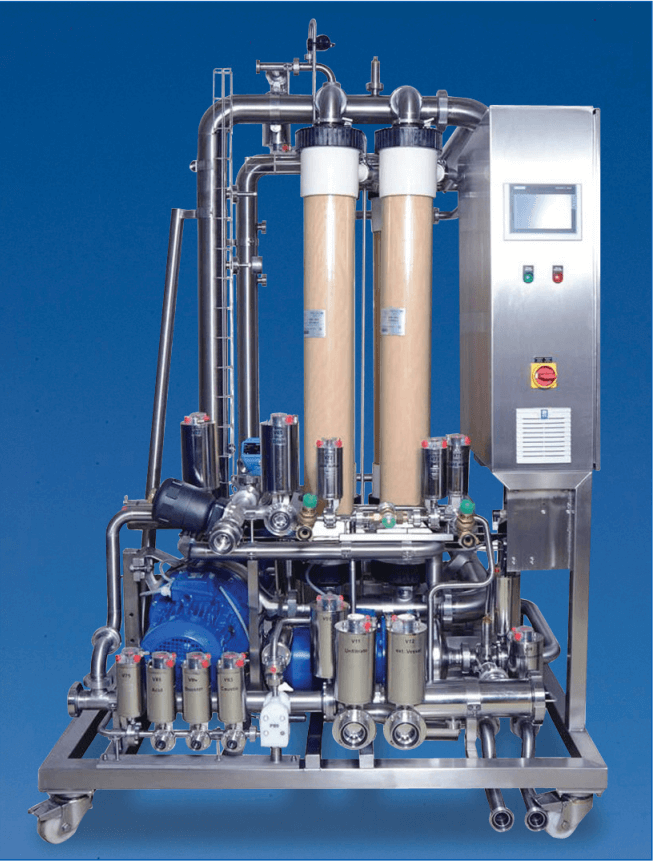Transformando fluxo tangencial na escolha perfeita para pequenas vinícolas
Produto Oenoflow™ FIT System
Descrição
O sistema Oenoflow FIT é um novo sistema tangencial modular, especificamente projetado para clarificação e filtração de polimento do vinho em pequenas vinícolas. Componentes ou “módulos” podem ser acoplados como peças de um quebra-cabeça para configurar sistemas que se adaptam às necessidades específicas de trabalho de cada vinícola.
Componente do Oenoflow FIT
O sistema base, construído de aço inoxidável, emprega duas membranas de microfiltração de fibra oca da grande área e alto fluxo. A unidade totalmente automatizada tem programação de "Ciclo" de forma que os sistemas podem ser operados e limpos com interação mínima de operador. Para adequar o sistema para as condições específicas da vinícola, blocos construtivos modulares adicionais podem ser adicionados ao sistema base.
Membranas Oenoflow FIT
Os módulos de microfiltração Oenoflow FIT incorporam as comprovadas membranas de fibra oca simétrica da Pall. Os módulos de alto fluxo e grande diâmetro com área de filtro de 21,5 metros quadrados têm o dobro da área de filtro dos módulos de fibra oca concorrentes típicos.
Benefícios em custo
Substituindo filtros de diatomita (kieselguhr) e placa pelo sistema de microfiltração de fluxo cruzado Oenoflow FIT, as vinícolas podem se beneficiar com a eliminação de uso e descarte de auxiliares de filtração, reduzindo a perda de vinho e aumentando a consistência da filtração. Com uma nova construção modular, o Oenoflow FIT fornece benefícios adicionais a vinículas pequenas e em crescimento: Econômico:
• Os sistemas podem ser configurados para atender ao orçamento disponível Flexível:
• Os componentes podem ser combinados para atender a diversas aplicações de vinícolas
• Podem ser adicionados componentes posteriormente para ampliação do sistema Expansível:
• Podem ser adicionados módulos para acomodar expansão futura da vinícola
Conformidade
Os sistemas Oenoflow FIT são fabricados de acordo com as Diretivas Europeias sobre Pressão e cada sistema é fornecido com um selo CE.
Diversos módulos Oenoflow foram qualificados como compatíveis com as normas reguladoras para produtos que podem entrar em contato com alimentos. Entre em contato com a Pall para obter mais detalhes.
Aplicações
Preparação e transferência de meio
Preparação e transferência de tampão
Transferência de inoculação para biorreator
Amostragem durante fermentação / cultura celular
Colheita de biorreator Transferência de fluido estéril entre operações da unidade
Manipulação de material estéril a granel em ambientes não classificados
Inerção de sonda em biorreatores, misturadores e biocontêiners 3D
Manifolds de filtração estéril Conexão híbrida de sistemas de aço inoxidável e descartáveis
Conexão de material estéril a granel para máquina de enchimento
Remoção de resíduos estéreis de fluxos de processo
